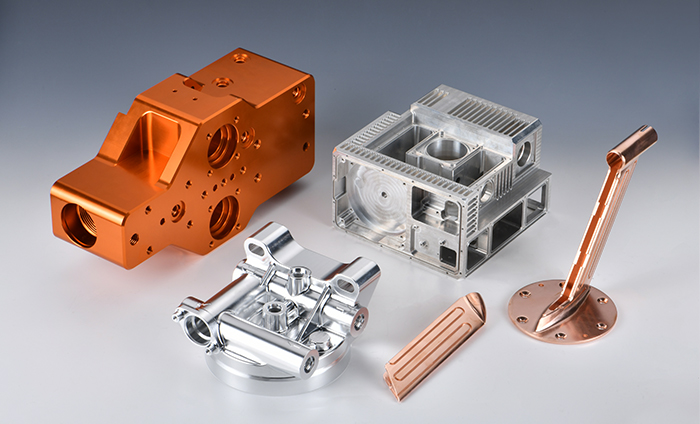Hanstar attended 2023 Dubai Airshow
Titanium alloy parts processing methods and precautions
Heat treatment process in the application of precision machining
Introduction to CNC precision machining common fatal problem points
Application of grinding machine in precision machining
Is kovar the same as Stainless Steel Material
The world of manufacturing has come a long way from the days of handmade goods. With the advent of technology, there are now two popular methods of creating custom-made parts in manufacturing: CNC machining and 3D printing. Both methods have their advantages and disadvantages, and it is essential to understand the differences between them before choosing which method to use. In this article, we will explore the key differences between CNC machining and 3D printing, including how they work, their limitations, and cost comparisons.
How CNC machining works?
CNC machining is a subtractive method of manufacturing that involves the use of computer-controlled machines to remove material from a solid block of material, such as metal or plastic, to create a custom-designed part. The process of CNC machining involves several steps. First, the designer creates a 3D model of the part using computer-aided design (CAD) software. The model is then translated into a set of instructions that the CNC machine can follow. These instructions are called G-code and tell the machine how to move the cutting tool to shape the material into the desired part.
CNC machines come in many different types, and each has its specific strengths and weaknesses. For example, a milling machine is excellent for cutting flat surfaces, while a lathe is better suited for creating round parts. CNC machines are incredibly accurate, and they can produce parts with tight tolerances, making them ideal for creating complex parts that require high precision.
One advantage of CNC machining is that it can work with a wide range of materials, including metals, plastics, and composites. This versatility makes CNC machining an excellent choice for parts that require strength, durability, and resistance to heat or chemicals.

How 3D printing works?
3D printing, also known as additive manufacturing, is a process that involves building a part layer by layer using a 3D printer. Unlike CNC machining, which involves removing material from a solid block, 3D printing adds material one layer at a time until the final part is complete. The process of 3D printing involves three main steps: modeling, slicing, and printing.
One advantage of 3D printing is that it can create complex shapes that would be difficult or impossible to make using CNC machining. It is also faster and less expensive to produce low-volume parts using 3D printing than CNC machining. However, the quality of the parts produced using 3D printing is not always as high as those produced using CNC machining.
While 3D printing has many advantages, it also has some limitations. One of the most significant limitations of 3D printing is the size of the parts that can be produced. Most 3D printers have a limited build volume, which means that they can only create parts that are smaller than a certain size. This limitation makes 3D printing unsuitable for producing large parts.
Cost comparison between CNC machining and 3D printing
When it comes to the cost of producing custom-made parts, there are several factors to consider. The cost of CNC machining and 3D printing varies depending on the complexity of the part, the materials used, and the volume of parts produced. Generally, 3D printing is less expensive than CNC machining for low-volume parts, while CNC machining is more cost-effective for high-volume parts.
The cost of CNC machining is often higher than 3D printing because it requires more equipment and expertise. CNC machines are expensive to purchase and maintain, and they require skilled operators to program and run them. Additionally, the cost of materials used in CNC machining can be high, especially for metals and other expensive materials.
On the other hand, 3D printing is a relatively low-cost method of producing custom-made parts. The cost of 3D printing is primarily determined by the cost of the material used, which is often significantly lower than the cost of materials used in CNC machining. However, the cost of 3D printing can increase significantly for larger parts or higher volumes of parts.
Which method is best for your project?
Choosing the right method for producing custom-made parts depends on several factors, including the complexity of the part, the quality required, and the volume of parts needed. If you need a part that requires high precision, tight tolerances, and resistance to heat or chemicals, CNC machining is likely the best choice. However, if you need a part with a complex shape or a low volume of parts, 3D printing may be more cost-effective.
In conclusion, CNC machining and 3D printing are two popular methods of producing custom-made parts in manufacturing. While both methods have their advantages and disadvantages, understanding the differences between them is essential for choosing the right method for your project. By considering factors such as the complexity of the part, the required quality, and the volume of parts needed, you can make an informed decision about whether CNC machining or 3D printing is the best choice for your project.
 Address: No.1 Plant 101A, Dongfang Wugang Industrial Park, Song Yu Road, Dongfang Community, Songgang Street, Bao’an District, Shenzhen City, Guangdong Province, 518105, China
Address: No.1 Plant 101A, Dongfang Wugang Industrial Park, Song Yu Road, Dongfang Community, Songgang Street, Bao’an District, Shenzhen City, Guangdong Province, 518105, China Mail Address:major_d@hanstarmold.com
Mail Address:major_d@hanstarmold.com Mobile/Whatsapp:+8615889322032
Mobile/Whatsapp:+8615889322032 Skype/Wechat:ht-zhang583
Skype/Wechat:ht-zhang583